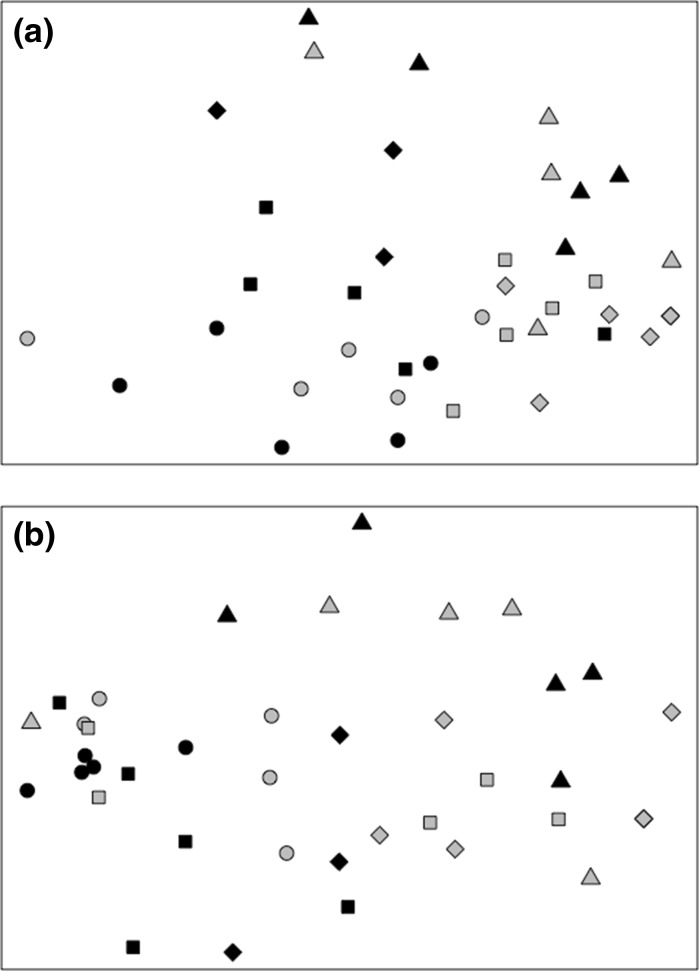Fig. 5.
Non-metric two-dimensional multi-dimensional scaling (nMDS) representations of the effects of sediment type and climate regime on macrofaunal community composition. Visualisations are based on square root transformed zero-adjusted Bray–Curtis dissimilarity matrices for a macrofaunal abundance and b macrofaunal biomass. Climate regimes are indicated by colour (black = Ambient: 11 °C, 380 ppm [CO2]; grey = Future: 15 °C, 1000 ppm [CO2]) and sediment types are indicated by symbol: circle = mud, square = sandy mud, diamond = muddy sand and triangle = sand. MDS dimensionality representation stress values are: a 0.185, b 0.200 (top Abundance, bottom Biomass)

